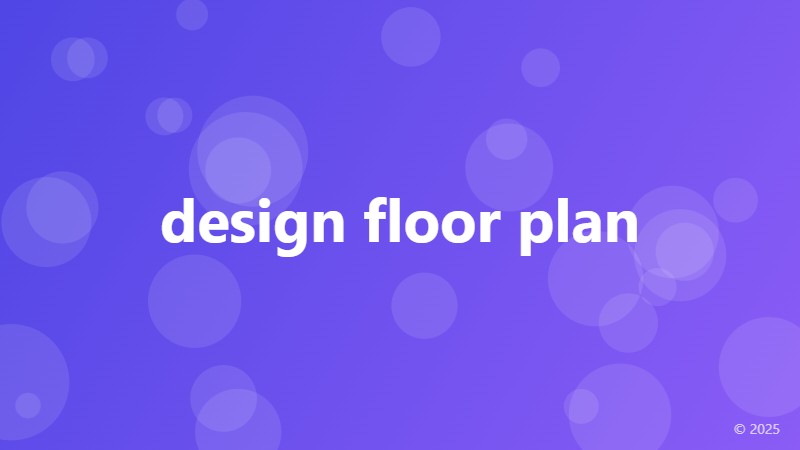design floor plan

Understanding the Importance of Design Floor Plan
When it comes to building or renovating a property, one of the most crucial steps is creating a design floor plan. A design floor plan is a detailed diagram that illustrates the layout of a building or space, including the arrangement of rooms, corridors, doors, windows, and other architectural features. This visual representation serves as a blueprint for architects, designers, builders, and homeowners to ensure that their vision is brought to life.
The Benefits of a Well-Designed Floor Plan
A well-crafted design floor plan offers numerous benefits, including:
• **Improved Space Utilization**: A design floor plan helps to optimize the use of space, ensuring that every area is functional and efficient. This is particularly important in small or irregularly shaped rooms, where a poorly designed layout can lead to wasted space.
• **Enhanced Aesthetics**: A design floor plan allows designers and architects to experiment with different layouts, shapes, and styles, resulting in a visually appealing and harmonious space.
• **Increased Property Value**: A well-designed floor plan can significantly increase the value of a property, making it more attractive to potential buyers or renters.
Key Elements of a Design Floor Plan
A comprehensive design floor plan should include the following essential elements:
• **Room Dimensions**: Accurate measurements of each room, including length, width, and any obstructions.
• **Door and Window Placement**: The location and size of doors and windows, which affect the flow of natural light and traffic.
• **Furniture and Fixture Layout**: The placement of furniture, appliances, and fixtures, such as sinks, toilets, and showers.
• **Electrical and Plumbing Fixtures**: The location of outlets, switches, and plumbing features, such as sinks and toilets.
Design Floor Plan Tools and Software
With the advancement of technology, creating a design floor plan has become more accessible and convenient. Some popular tools and software for designing floor plans include:
• **Autodesk AutoCAD**: A powerful CAD software used by architects and designers to create detailed 2D and 3D floor plans.
• **SketchUp**: A user-friendly 3D modeling software that allows users to create and customize floor plans with ease.
• **Floorplanner**: A web-based tool that enables users to create 2D and 3D floor plans, including furniture and decor.
Conclusion
A design floor plan is an indispensable tool for anyone involved in building or renovating a property. By understanding the importance of a design floor plan, its benefits, and key elements, individuals can create a functional, aesthetically pleasing, and valuable space. With the help of modern design floor plan tools and software, bringing your vision to life has never been easier.